When it comes to any creative project or essential repair, bonding fabric to plastic can be a challenging task. Whether you design your own crafts, repair household items, or help upgrade your DIY skills, choosing the right adhesive is essential for creating a strong and smooth bond. Not every glue will do; fixtures need strength and flexibility from glues for these two very different materials. That’s where my guide comes in. Here, you will find everything you need to know about the glue that is best for bonding fabric to plastic. From understanding why it is difficult to bond these materials to tips for a successful bond, this article will help you produce professional results. So, get ready for some fun with your craft and repair jobs!
Understanding Glue for Fabric to Plastic
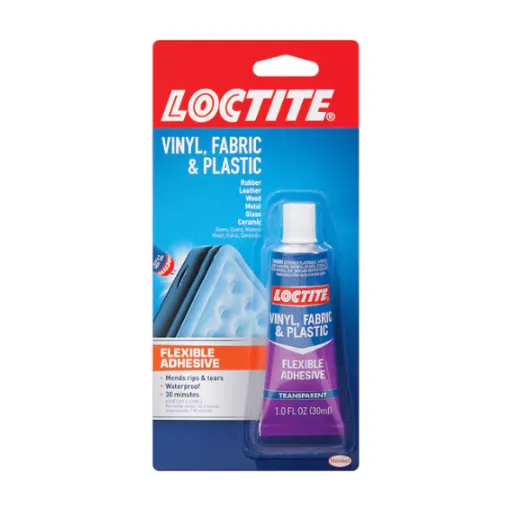
When bonding fabric to a plastic surface, the key is to use glue specifically designed for use with these two materials. A good adhesive grips the porous structure of the fabric while also adhering to the smooth, non-porous surface of plastic. Think epoxy types, polyurethane, or special fabric glues that specify “can be used with plastic.” Both surfaces should be free from dust and dirt before application; this also applies to the drying process. Finally, before curing, it is essential to adhere to the timing specified by the manufacturer. Prior preparation and the choice of glue will always ensure good bonding and durability.
Material Properties: Fabric vs. Plastic
The durability of fabric versus plastic ultimately depends on the end-use application and environmental conditions. Fabric maintains its tensile strength and flexibility, and can be very durable when synthesized from polyester or nylon fiber. It tends to resist tearing and stretching while remaining relatively lightweight. Yet fabric can get damaged from UV rays, moisture, and wear and tear over time.
Plastic, in contrast, tends to resist environmental factors like moisture and UV better if it is an outdoor-grade design. It is rigid and offers resistance to impact, making it suitable for structural purposes. Yet, some plastics become brittle at extreme temperatures or degrade under prolonged exposure to sunlight if not stabilized against UV damage. Hence, durability-wise, the fabric versus plastic argument largely depends on use-case scenarios and the conditions under which the material will be used.
Adhesive Characteristics for Optimal Bonding
The selection of adhesives is geared toward achieving optimal bonding performance, considering compatibility with the materials to be bonded, working conditions, and the desired durability duration. These include strength, flexibility, and other environmental conditions such as temperature change, moisture, and UV radiation. Epoxy would be better suited for situations where strong, permanent bonds are required. In contrast, silicones satisfy the requirements for flexible bonds under extreme environmental conditions.
Proper surface preparation is also necessary for good adhesion. Generally, surface cleaning, roughening, or priming constitutes surface preparation, which involves removing contaminants and promoting good adhesive contact. Curing is another potential consideration: faster curing has advantages, as speed of repair is useful with cyanoacrylate, whereas more slowly cured adhesives tend to perform better in more demanding applications where long-term strength is a priority. Ideally, when the processes of selection and application are matched to the program’s requirements, good bonding results will almost always be obtained.
Top 3 Recommended Glues for Attaching Fabric to Plastic
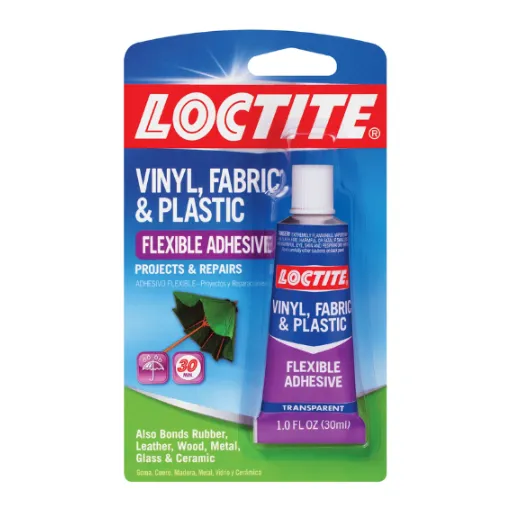
1. Loctite Vinyl, Fabric & Plastic Adhesive
The adhesive is specially formulated for vinyl, fabric, and plastic materials. It offers a strong waterproof bond, dries clear, and is therefore ideal for use when appearance is a concern. The flexibility ensures longevity even when subjected to stress or movement.
2. 3M Super 77 Multi-Surface Spray Adhesive
This spray adhesive works best for lightweight materials, such as fabric or plastic. It sticks fast and permanently, after being applied evenly. Its ability to quickly cover large surfaces will save you a significant amount of time and effort.
3. Gorilla Super Glue Gel
This gel adhesive provides you with all the precision and control you need for small or detailed work. It’s fast-drying and will forever stick things together, especially if you want resistance to impact and moisture.
Loctite Vinyl, Fabric & Plastic Adhesive
Like the name Loctite suggests, it is a vinyl, fabric, and plastic glue developed for repairs on all flexible materials. Being perfect for vinyl seats, widths, tarps, and outdoor gear, the adhesive forms a clear, waterproof bond that will not turn yellow or brittle with age. With its flexible and durable properties, the adhesive can be used in almost any repair. This is a clear-drying adhesive, meaning that when dry, the surface is invisible and blends well with the materials, allowing them to withstand sun and water.
Gorilla Super Glue Gel
The Gorilla Super Glue Gel is an exclusive, quick-acting super adhesive that fast repairs and holds through time. Its no-running gel formula makes it perfect for vertical surfaces or projects that need a little extra control. Its shock-resistant formula resists shocks, vibrations, and extreme temperatures, making it one of the best adhesives for a wide range of materials, including wood, metal, ceramics, paper, and more. Whether it’s for delicate craftwork or heavy household repairs, this glue promises reliable performance with minimal mess and fuss.
Step-by-Step Guide for Gluing Fabric to Plastic
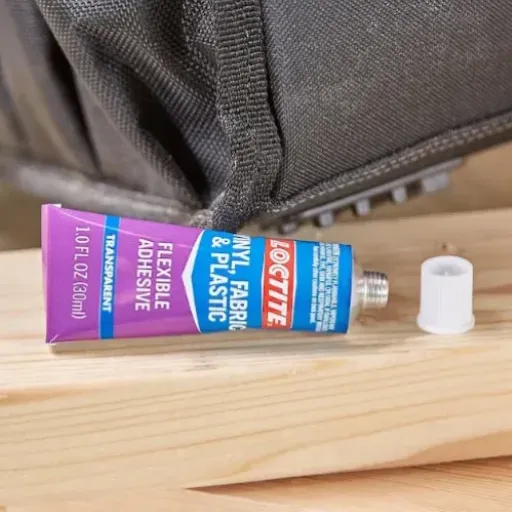
- Prepare Your Materials
Gather the materials, which include fabric, plastic, and glue with which to bond them. An all-around strong adhesive that sets well on multiple surfaces or one particular surface to fabrics should be fine. - Clean the Surfaces
Ensure the fabric and plastic surfaces are clean and free from debris. For plastic, wipe down the surface with a damp cloth to remove dust and oils, then dry it well. On the contrary, the fabric should not be wet or heavily textured to ensure good adhesion. - Test the Glue
Apply a small amount of glue to a spare piece of fabric and plastic to test if it adheres well without damaging the materials. - Apply the Adhesive
Apply the glue thinly and evenly to the surface of the plastic. Follow any additional instructions provided by the manufacturer; for example, a no-run gel glue is particularly suitable for accurate application. - Press the Fabric onto the Plastic
A much wiser alignment of the fabric with the plastic, while still pressing it to set quite well. Remove any air bubbles and creases during this stage.
Application Techniques for Best Results
For optimal adhesion when creating magnificent patterns on any fabric, proper preparation is essential. Begin by ensuring that the surfaces of the fabric are clean, dry, and free from any residue, such as dust or oils, as a lack of homogeneity could disallow proper adhesion. Applying glue with an uneven, thick blob over a fabric area can cause the glue to clump up or seep through the fabric. Consider using a tiny brush or applicator to maximize your precision on intricate projects.
Allow for the complete drying time specified by the manufacturer’s instructions. Do not rush this drying process; premature movement weakens the bond. Heavier fabrics can generally be aided by competition pressure from a weight or clamps. Always test on a scrap piece of fabric before applying glue to your final project to judge compatibility and results. The proper technique puts in a finish worthy of a sticker!
Bonding Process and Curing Time
The bonding of fabric truly requires following specific steps relating to the adhesive being used. One must ensure that these surfaces are dry, clean, and free from dirt, lint, and oil. Apply a small quantity of adhesive, thinly spread using an applicator or brush, wherever necessary. The fabrics must be pressed tightly to eliminate any air bubbles between them, as air pockets tend to weaken the bonding capacity.
Depending on the type of adhesive, the curing time may differ; other factors include changes in temperature and humidity. Most fabric adhesives ideally require 24-72 hours to cure completely, although the bond should gain sufficient strength for light handling shortly after application. It is a good idea to check the package and follow the instructions for glue usage to get good results. Until the fabric fully cures, it should not be exposed to heavy movement or any stress. Patience will yield great fruits in the form of a durable and aesthetically pleasing finish.
Tips for Ensuring Long-Lasting Bonds
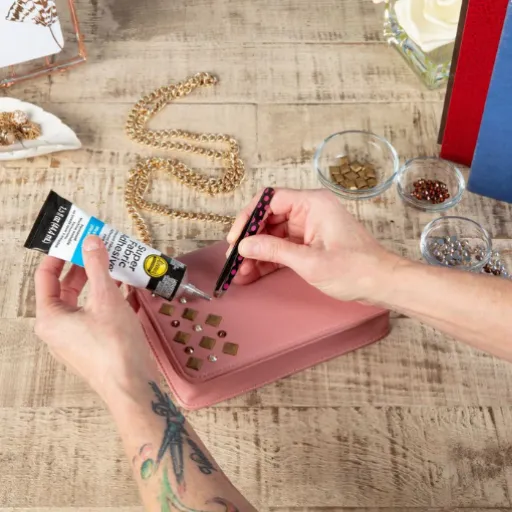
- Clean Surfaces Thoroughly: Ensure all surfaces are clean, dry, and free of dust, grease, or debris before applying adhesive. Clean surfaces promote better adhesion.
- Use the Right Adhesive: Select an adhesive specifically designed for the materials being bonded. Check manufacturer guidelines to ensure compatibility.
- Apply Evenly and Precisely: Distribute the adhesive evenly across the bonding surface to avoid weak spots and ensure a strong connection.
- Allow Proper Curing Time: Follow the recommended curing time listed on the adhesive product. Avoid using or stressing the bond before it fully cures.
- Store Adhesive Properly: Keep unused adhesive in a sealed container and store it in a cool, dry place to maintain its effectiveness for future use.
Environmental Factors to Consider
Depending on the adhesive being used, environmental conditions will be of utmost importance for it to perform well. Temperature, humidity, or ventilation can condition the very process of bonding glue adhesives. In high-humidity situations, curing can be obstructed for adhesives with moisture-sensitive components. Conversely, the adhesive may vary in consistency due to extreme cold or heat, making it more challenging to apply and less effective. Proper ventilation is essential to ensure the safe handling of adhesives, as some release volatile organic compounds (VOCs) into enclosed spaces, making them hazardous. Always refer to the manufacturer’s recommended directions to understand how specific environmental factors may affect your adhesive during both application and storage.
Maintenance for Durable Adhesive Bonds
The following measures are suggested to ensure long-lasting adhesive bonds: Inspect the bonded area for signs of wear, such as peeling, cracking, or weakening of the adhesive. In case there are exposure possibilities to environmental agents such as moisture, temperature fluctuations, or UV rays, apply a protective coat or sealant to protect the bond. Cleaning any surface near the adhesive with appropriate products that will not damage the bond can help keep contaminants at bay, preventing them from interfering with the bond. The adhesive-bonded area should be kept free from excessive mechanical stress, as this can lead to premature bond failure. Thus, by following these simple steps in conjunction with the recommendations provided by the adhesive manufacturer, adhesive bonds will remain strong and reliable over time.
Safety Precautions When Using Adhesives
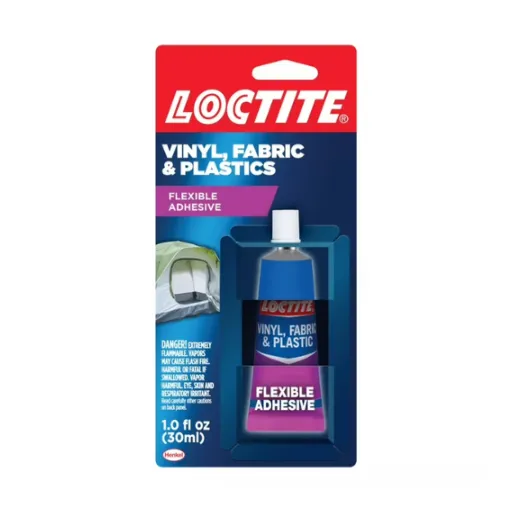
- Work in a Well-Ventilated Area – Ensure proper ventilation so you do not have to sniff foul fumes given off by certain adhesives. The use of protective masks is encouraged, if necessary.
- Wear Protective Gear – Always wear gloves to protect your skin and protective goggles to shield your eyes from splashes.
- Avoid Direct Contact – With Adhesive-Do not allow adhesives to come into contact with your skin or eyes. Wash thoroughly with water in cases of accidental contact and seek medical advice if any irritation persists.
- Follow the Manufacturer’s Instructions – Read and follow all the instructions provided by the manufacturer, including curing times and the compatibility of the adhesive with the materials.
- Keep Away from Heat and Sparks – Store and use adhesives away from open flames or high-temperature sources, as most adhesives are highly flammable.
Importance of Ventilation
When working with adhesives, good ventilation is crucial to prevent the accumulation of potentially harmful fumes. Adhesives, especially those containing volatile organic compounds (VOCs), can emit gases that cause dizziness, headaches, or irritation of the respiratory system if inhaled in an ill-ventilated area. It has been recorded recently that people are searching more about safe adhesive usage and ventilation for adhesives, indicating a surge in awareness about the matter. With adequate ventilation, made possible by fans or simply working near an open window, exposure to such fumes can be significantly minimized. While prioritizing ventilation, all parties involved ensure safety and promote a healthier work environment.
Protective Gear Recommendations
Performing safety measures before adhesive work ensures complete protection from exposure to fumes and contact with adhesives. To support this, a recent search with a reference. engine yields an appearance of terms such as “best masks for adhesive fumes” and “protective gloves for adhesives.” A well-fitted respirator with filters approved to filter chemical vapors can reduce the danger of inhaling harmful substances. Additionally, nitrile gloves are warranted due to their superior resistance to chemicals, as well as their pleasant durability. Eye protection, such as safety goggles, can help limit the risk of splashes. Working with adhesives and maintaining proper ventilation will provide an additional safety measure.
Proper Storage and Disposal of Adhesives
Firstly, adhesives should be stored in a cool, dry place with no direct sunlight. Heat sources should also be avoided to prevent degradation. Containers are sealed tightly after use to prevent spills or contamination of the substances. For disposal, I adhere to local disposal laws and utilize the designated collection points for chemical waste. I do not purge adhesives down drains or into regular trash since they can be environmentally hazardous.
Reference Sources
Here are three professional and authoritative reference sources on “the strongest glue for fabric to plastic” on which you can rely for accuracy in your article. Being of an academic nature, they provide insights into the in-depth nature of the thing known as adhesives and applications thereof:
Polyester (PET) fabrics coated with an environmentally friendly adhesive, and their interface structure and adhesive properties with rubber
Published by ScienceDirect, this article examines the impact of reaction conditions, chemical structures, and interfacial adhesion mechanisms on polyester fabrics.
Polyester adhesives in nonwovens and other textile applications
This paper is published in the Journal of Industrial Textiles and reviews polyester adhesives about their bonding properties for fabric, foam, plastic, and wood substrates.
Adhesives and plastics based on soy protein products
Also published on ScienceDirect, this article reviews polymeric materials, including adhesives and plastics, derived from renewable resources such as soy protein, with a focus on their bonding properties.
Frequently Asked Questions (FAQs)
What is the strongest glue for fabric to plastic?
The strongest glue for fabric to plastic typically includes industrial adhesives, such as E6000 craft adhesive and Loctite super glue. These adhesives provide a strong bond and are designed to bond various materials, ensuring durability in your projects.
What type of glue works best for attaching fabric to plastic?
For attaching fabric to plastic, the best options include flexible adhesives, such as Gorilla Glue and contact adhesive. These glues offer a strong bond while allowing for some flexibility, making them ideal for projects that require movement.
Can I use super glue on fabric?
Yes, super glue can be used on fabric, but it’s essential to apply it carefully. Super glue provides a quick bond and dries clear, but it may not stay flexible, which could lead to fabric damage during washing or movement.
What is the drying time for fabric glue?
The drying time for fabric glue varies depending on the type used. Most fabric adhesives, such as tacky glue or hot glue, dry quickly, typically within 1-2 hours. However, for a permanent bond, allowing 24 hours for complete curing is recommended.
Is there a waterproof adhesive for fabric to plastic?
Yes, several waterproof adhesives are suitable for fabric-to-plastic applications. E6000 craft adhesive and certain types of polyurethane glue offer waterproof properties, making them ideal for outdoor or moisture-prone projects.
What should I consider when choosing the best adhesive for fabric and plastic?
When selecting the ideal adhesive for fabric and plastic, consider factors such as the type of plastic, the required flexibility, and whether the glue needs to be waterproof. It’s also essential to ensure that the adhesive can handle the stress of movement without breaking the bond.
Can hot glue be used for gluing fabric to plastic?
Hot glue can be a quick solution for gluing fabric to plastic, but it’s essential to note that it may not provide a firm or permanent bond. If flexibility and durability are required, consider using a fabric-specific adhesive instead.
How do I apply glue to the plastic surface for fabric adhesion?
To apply glue to the plastic surface for fabric adhesion, ensure the surface is clean and dry. Apply a thin layer of adhesive to the edges or the area where the fabric will be placed, and press the fabric firmly against it until the glue sets.
What is the best adhesive for fabric that dries clear?
For fabric projects that require an adhesive that dries clear, options like fabric fusion and clear liquid adhesive are excellent choices. These adhesives bond well without leaving visible residue, maintaining the aesthetic of your project.



















